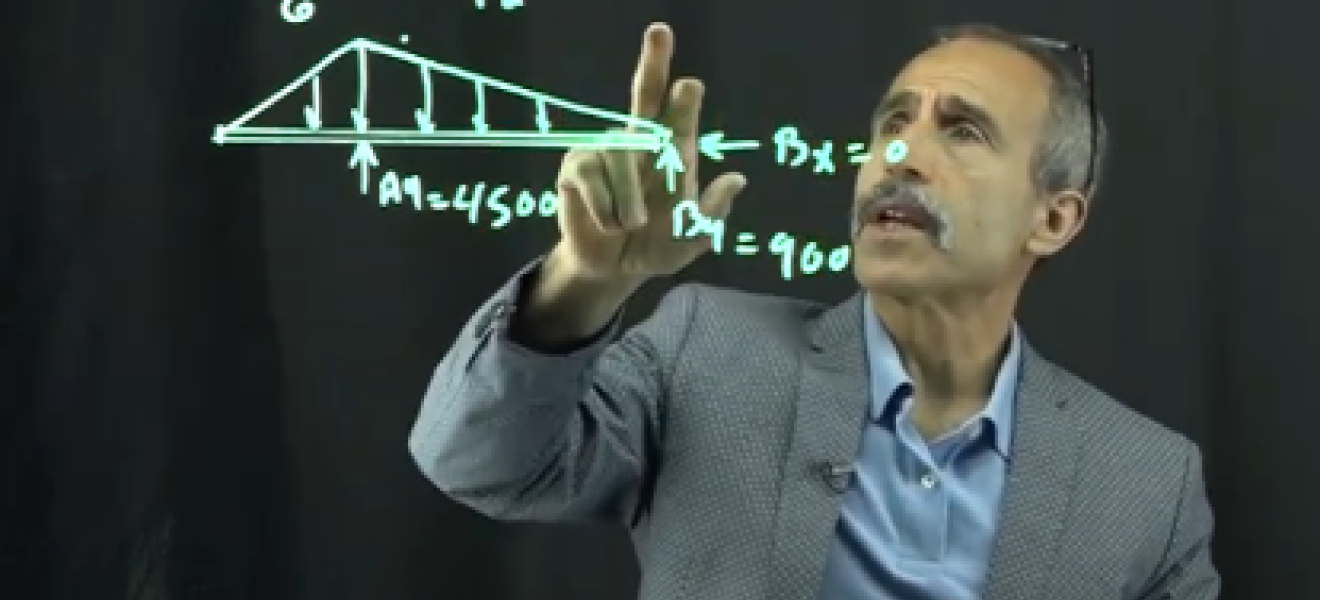Elevating Learning with Lightboard Technology

Assistant Professor Nasser Yari demonstrates the lightboard
Wentworth faculty often find creative solutions, techniques, and strategies to engage their students, which includes integrating technology into the classroom. Nasser Yari, Ph.D., P.E., Assistant Professor in the School of Engineering, has found that Lightboard technology is one of the most innovative and effective methods of delivering online lectures to students in his Civil Engineering courses.
Invented by Professor Michael Peshkin of Northwestern University, the Lightboard is a transparent glass whiteboard illuminated with LED lights. Teachers and presenters are able to write complex material using neon markers that glow on a black background, bringing information to life like a colorful hologram. Unlike a traditional blackboard or whiteboard where the user stands in front, the Lightboard requires that the user stands behind it. In addition to enabling viewers to see the presenter’s face while simultaneously seeing text and images, this approach facilitates better interactions between presenters and their audience.
“This helps faculty develop a special connection with students when they can see facial expressions, hand movements, and body language,” said Yari. “For some students, this can make the topic easier to understand.”
When Yari realized how advantageous a Lightboard could be, he decided to build three of his own. He made his first Lightboard in October 2018 using an old glass panel on an exterior door that was going to be salvaged. One year later, in December 2019, he built a smaller, portable version made from Clear Acrylic Sheet Plexiglass that he purchased from Home Depot. In March 2020, he presented the second Lightboard at Wentworth’s Faculty Showcase. It was so effective that Yari was able to convince key decision-makers to buy a Lightboard similar to those utilized by other universities, which is currently available to all Wentworth faculty.
Yari’s success with this type of technology inspired him to build his most recent Lightboard, and along the way, he has found that the quality of the glass is very important.
“Low iron or ultra-clear starphire glass is the best type of glass for building a Lightboard that is capable of delivering edge-lit LED lighting with maximum clarity and color neutrality,” said Yari.
This method allows the presenter to better demonstrate lecture materials, which includes problem-solving and creating drawings such as equations and diagrams while enabling the presenter to face students without blocking the written content on the board.
Yari has enjoyed using Lightboard technology so much, he has started reproducing some of his lectures and uploading them to YouTube for his students. The flexibility and ease of access provide them with the comfort of watching videos at any time in any location. This versatile and equitable teaching and learning tool not only benefits visual and auditory learners, but also provides students with additional pathways to learn and grow at their own pace while supporting students’ overall learning development.
